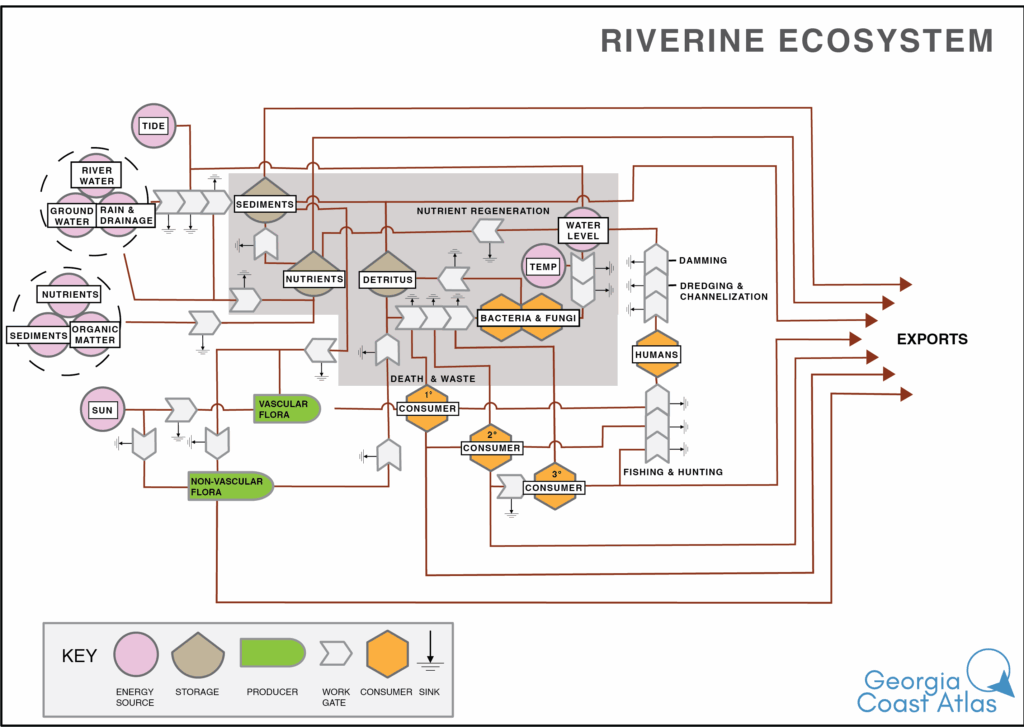
Riverine ecosystems are wetland and deep-water habitats associated with a river channel. They are primarily freshwater systems, with unidirectional flowing water that moves from source to sink. The ecosystem is further defined by adjacent floodplains, where groundwater interacts with surface water. Riverine ecosystems host biotic interactions among animals, plants, and microorganisms, in addition to abiotic physical and chemical interactions. Critical habitat formation and support factors include water flow rates, temperature, clarity, and chemical composition, impacting everything from large mammals to microscopic bacteria. Critical ecological functions include nutrient cycling, solar energy flow (photosynthesis) through the food web, habitat diversity for species, and riverine connectivity that allows for species mobility, including migration and dispersal. Riverine ecosystems are crucial for biodiversity, providing nutrient recycling, food regulation, and clean water.
